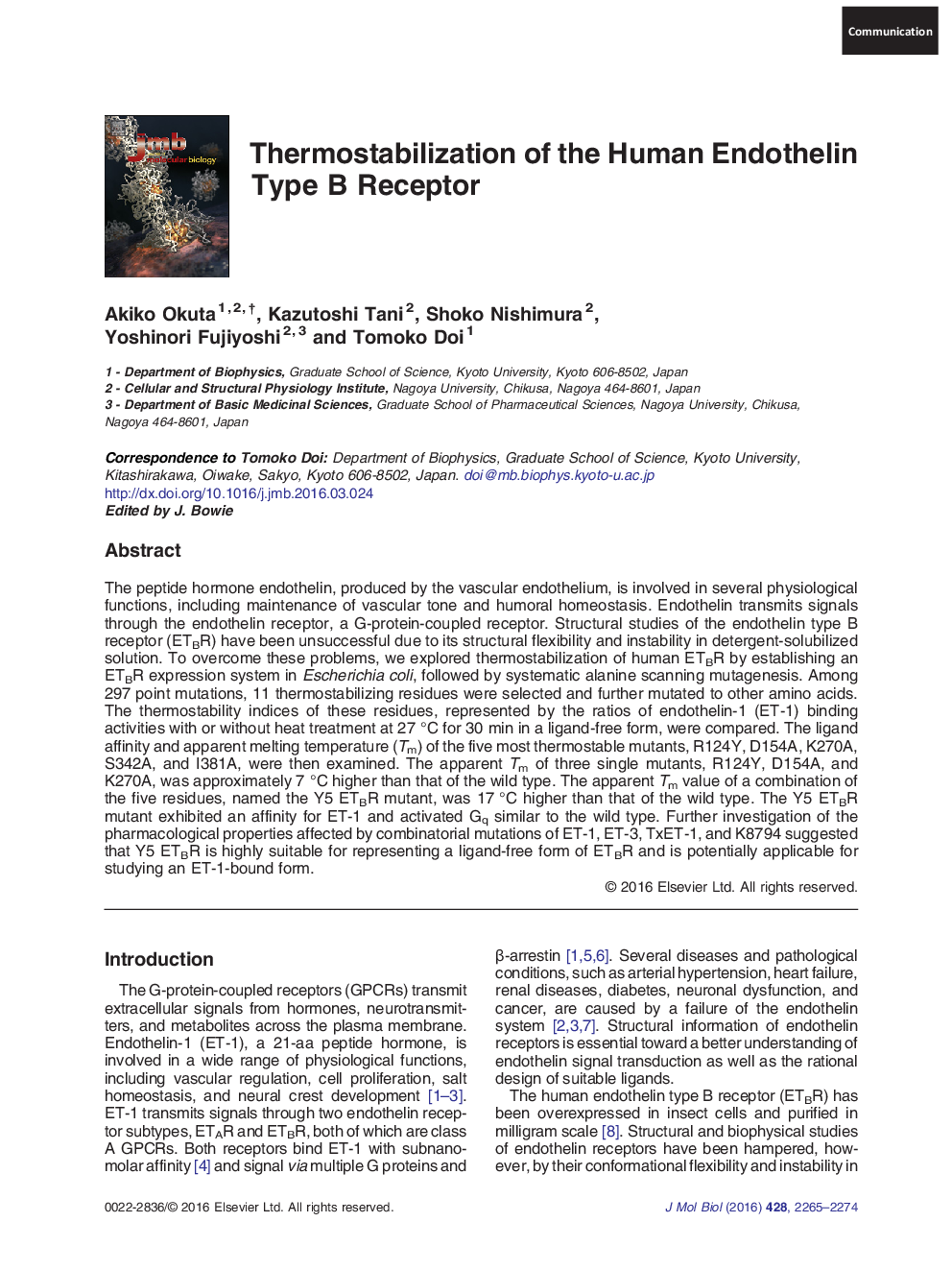| کد مقاله | کد نشریه | سال انتشار | مقاله انگلیسی | نسخه تمام متن |
|---|---|---|---|---|
| 2184341 | 1095831 | 2016 | 10 صفحه PDF | دانلود رایگان |
• Structural instability in detergent micelles is preventing crystallization of ETBR
• Human ETBR was expressed in Escherichia coli for screening
• Thermostabilization of ligand-free ETBR was explored by alanine-scanning mutagenesis
• ETBR mutant containing 5 mutations had a 17 °C higher apparent Tm than wild-type
• Thermostabilization in a ligand-free form is versatile for other ligand-bound forms
The peptide hormone endothelin, produced by the vascular endothelium, is involved in several physiological functions, including maintenance of vascular tone and humoral homeostasis. Endothelin transmits signals through the endothelin receptor, a G-protein-coupled receptor. Structural studies of the endothelin type B receptor (ETBR) have been unsuccessful due to its structural flexibility and instability in detergent-solubilized solution. To overcome these problems, we explored thermostabilization of human ETBR by establishing an ETBR expression system in Escherichia coli, followed by systematic alanine scanning mutagenesis. Among 297 point mutations, 11 thermostabilizing residues were selected and further mutated to other amino acids. The thermostability indices of these residues, represented by the ratios of endothelin-1 (ET-1) binding activities with or without heat treatment at 27 °C for 30 min in a ligand-free form, were compared. The ligand affinity and apparent melting temperature (Tm) of the five most thermostable mutants, R124Y, D154A, K270A, S342A, and I381A, were then examined. The apparent Tm of three single mutants, R124Y, D154A, and K270A, was approximately 7 °C higher than that of the wild type. The apparent Tm value of a combination of the five residues, named the Y5 ETBR mutant, was 17 °C higher than that of the wild type. The Y5 ETBR mutant exhibited an affinity for ET-1 and activated Gq similar to the wild type. Further investigation of the pharmacological properties affected by combinatorial mutations of ET-1, ET-3, TxET-1, and K8794 suggested that Y5 ETBR is highly suitable for representing a ligand-free form of ETBR and is potentially applicable for studying an ET-1-bound form.
Graphical AbstractFigure optionsDownload high-quality image (73 K)Download as PowerPoint slide
Journal: Journal of Molecular Biology - Volume 428, Issue 11, 5 June 2016, Pages 2265–2274
